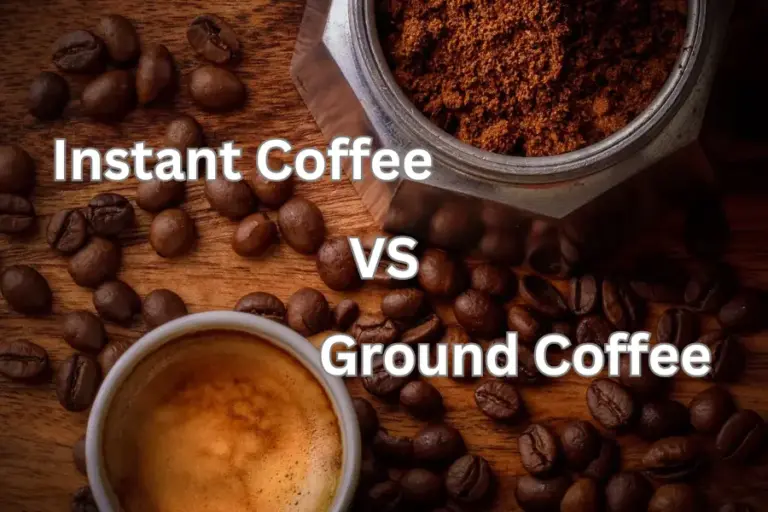Latte vs Coffee: Which One Suits Your Taste and Caffeine Needs?

Latee vs coffee is two popular options that coffee enthusiasts face the choice. Both are their punch of caffeine and the comfort of their tastes. However, in the ways they are prepared and tasted, they are different. Latte brings creamy, frothy milk to the mix, while regular brings a smooth and indulgent flavor, the more straightforward robust one. Each option offers something special depending on how you like your cup.
If you want to know which one is better for your taste or caffeine cravings, spend a little time reading the details below.
What Is Coffee?
Coffee is the brewed beverage of roasted coffee beans, from mild to full body, and made from roasted coffee beans, which can be brewed in a pour-over or an espresso. The roast level also affects the taste from light to dark.
The world’s most beloved of drinks, coffee is a punchy and energy-giving round of caffeine. For many people, it’s a part of their daily routine.

What Is A Latte?
Latte is a creamy, smooth coffee drink that so many delight in sipping first thing in the morning or as a treat throughout the day. Latte combines rich espresso with steamed milk, creating a smooth texture that is both pleasant and satisfying.
The latte tradition originates in Italy, from Milan in particular, and has since gone around the world. The balance is the secret to a good latte: the amount of espresso and milk used to make it nice and creamy. The latte art and detailed preparation show the care that goes into making this much-loved drink.

Latte vs Coffee: The Key Differences
Caffeine lovers may choose lattes or coffee. However, they are two very different products in terms of ingredients, flavor, preparation, and nutritional impact.
Caffeine Content Comparison
In general, a latte has less caffeine than regular coffee. A standard cup of coffee will contain about 95 mg of caffeine, with a latte (with one espresso shot) containing about 63 mg. However, a double shot latte brings the caffeine closer to that of a regular coffee.
Coffee’s higher caffeine content a stronger, quicker boost to alertness and energy. Lattes with less caffeine per serving which gives you a gentler, longer-lasting energy lift.
Milk Content and Foam
Regular coffee has much more coffee than milk, so it is much bitterer. However, a latte has a much higher milk content which makes the coffee taste smoother, and creamier. This helps to mask the coffee’s natural bitterness. The added milk also provides extra calcium, protein, and fat.
Latte are steamed milk with a thin layer of foam on top, sometimes decorated with latte art. This foam, while light, adds a visually pleasing element and a delicate mouthfeel. Regular coffee focuses more on the natural flavor without the creamy element.
Flavor Profiles and Strength
Coffee’s bold, straightforward flavor is exactly what coffee junkies like. Meanwhile, the milk of latte makes it softer, smoother, and naturally sweeter. If you like a milder coffee than black coffee, a latte is a great choice.
Regular coffee will give you a rich, intense coffee flavor if that’s the kind you prefer. However, if you’re into creamier, mellower things, the latte (milk and espresso combined) might be your thing.
Nutritional Value and Calories
Black coffee has fewer calories than lattes because it doesn’t have milk. Black coffee has virtually no calories unless you add cream or sugar. If you prefer your latte with milk, it can have between 120 to 200 calories.
However, black coffee doesn’t have the extra nutrients from the milk, they have in lattes. Milk provides protein, fat, and carbs. Besides the caffeine, the latte provides calcium, vital for healthy bones, and a tiny amount of natural sugar. This is the reason a latte is slightly sweeter than black coffee.
Here are the summarization table differences between latte vs coffee:
| Aspect | Latte | Regular Coffee |
| Caffeine Content | Lower (63 mg with one shot; ~125 mg with two) | Higher (~95 mg per 8 oz cup) |
| Energy Effect | Gentler, longer-lasting energy boost | Stronger, quicker energy kick |
| Milk Content | High (steamed milk with foam) | Minimal or none |
| Foam | Thin layer of foam, often with latte art | Typically no foam |
| Flavor Profile | Creamy, smooth, naturally sweeter | Bold, robust, bitter |
| Strength | Milder due to milk dilution | Stronger, full coffee flavor |
| Calories | Higher (120-200 depending on milk type) | Very low (near zero without additives) |
| Nutritional Value | Provides calcium, protein, fat, and carbs | Lacks nutrients unless additives are used |

Latte vs Coffee: Which One Is Better For You?
Between a latte and regular coffee, you should choose according to your preferences and nutritional needs. Both drinks are rich in unique benefits, apart from taste: energy boosts or essential nutrients.
Benefits of Drinking Coffee
Antioxidants are found in coffee and help fight oxidative stress in the body and may lower the risk of some diseases. The higher caffeine in it makes for better focus and alertness. Coffee is a great choice for a busy morning or a long workday. According to studies, regular coffee consumption may also support heart health, reduce the risk of type 2 diabetes, and help to improve mood.
Benefits of Drinking Lattes
Lattes unite the energy-boosting properties of espresso with the additional nutritional content of milk. Milk has calcium for strong bones, protein for muscle repair, B12, and other essential vitamins. The milk in lattes can also be easier on your stomach, which is good for people who are sensitive to coffee’s acidity. In addition, its creamy, soothing texture provides an ideal beverage experience.
Side Effects of Coffee and Lattes
- Calories and Sugar: Lattes typically have more calories than black coffee, especially when flavored syrups or whipped cream are added. If you’re watching your calorie intake, key to monitoring portion sizes and sweeteners.
- Dairy Considerations: Lattes are really reliant on milk. Therefore, this might not suit people who are lactose intolerant or do not like milk. Fortunately, oat, almond, and soy milk can replace traditional dairy without sacrificing taste or texture.
- Coffee Acidity: For others, the acidity in black coffee can be enough to give them stomach discomfort or heartburn. Therefore, lattes may be a gentler option.
Finally, people choose latte vs coffee which comes down to a preference and need for a latte or coffee. Coffee is bold in flavor, has fewer calories, and gives you a quick energy boost for busy days. On the other hand, Lattes adds a little more during the day with creamy, comforting texture and nutrients from milk and less of a kick. Both are versatile and customizable. Therefore it is a great choice based on your mood and lifestyle.
How to Make a Latte and Coffee at Home
If you do have not specialized equipment or have the equipment, making a latte and coffee at home is easy. Here’s a quick guide to perfecting each drink.
Making a Perfect Latte
Here is how to make a perfect latte at home with a machine and without a machine:
- With a Machine: Brew one shot of espresso. You froth the milk, with the aim of a small, silky microfoam. You hold back the foam when pouring the milk over your espresso, to pour last and create a creamy layer on top.
- Without a Machine: Make coffee or espresso strong. You microwave or cook the milk on the stove and whisk or shake vigorously in a jar to make froth. You need to hold the foam for the final layer and pour it over the coffee.
Tip: To get the best froth, you use whole milk or another type of milk with good frothing (like oat or almond milk).
Making a Great Cup of Coffee
A great cup of coffee comes down to what you prefer and the beans you use.
- Brewing Methods: If you like a rich, rich flavor, you can use a French Press to brew. On the other hand, if you like a clean, crisp flavor, you can choose pour-over or convenience like drip coffee.
- Beans and Grind: If you like a robust flavor, you should select medium to dark roasts. For a delicate, you choose to select lighter roasts. You can use a coarse grind if you want French press. For Pour-Over, medium coarse is perfect. And medium grind is suitable for pour-over.
Final Words
Latte vs coffee is the perfect delicious drink. Once you understand the taste and preparation differences, you’ll know which one to choose based on your mood and flavor preference. Let coffee and latte bring you the refreshment and inspiration to work.




